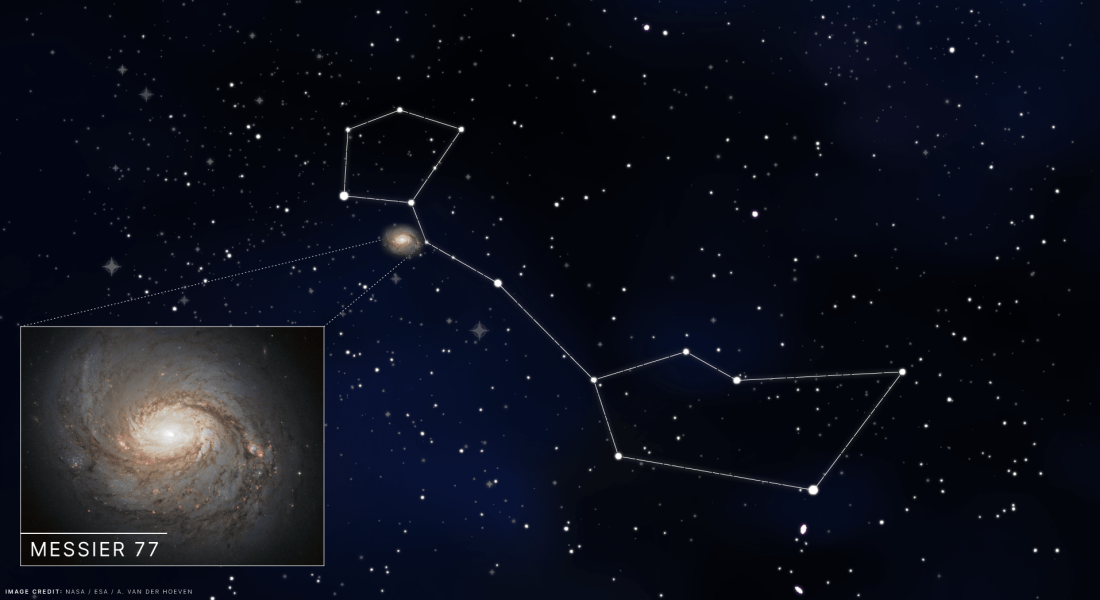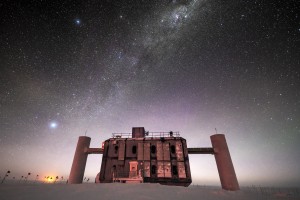IceCube neutrinos give us first glimpse into the inner depths of an active galaxy
For the first time, an international team of scientists including collaborators at the Niels Bohr Institute have found evidence of high-energy neutrino emission from an active galaxy (NGC 1068) in the constellation Cetus and one of the most familiar and well-studied galaxies to date. The detection was made at the IceCube Neutrino Observatory, a massive neutrino telescope encompassing 1 billion tons of instrumented ice at the South Pole in Antarctica.

Unlike light, neutrinos can escape in large numbers from extremely dense environments in the universe and reach Earth largely undisturbed by matter and the electromagnetic fields that occupy extragalactic space. Although scientists envisioned neutrino astronomy more than 60 years ago, the weak interaction of neutrinos with matter makes their detection extremely difficult. Neutrinos could be key to our queries about the workings of the most extreme objects in the cosmos.
NGC 1068 has the potential to become neutrino astronomy's first extragalactic beacon. Future data from IceCube and upcoming observatories will be able to decipher the astrophysical mechanisms at play.
The results, published in the Nov. 4, 2022 edition of the journal Science, are "a big step towards neutrino astronomy" says Markus Ahlers, Assistant Professor at the Niels Bohr Institute and IceCube researcher. "NGC 1068 has the potential to become neutrino astronomy's first extragalactic beacon. Future data from IceCube and upcoming observatories will be able to decipher the astrophysical mechanisms at play."
As is the case with our home galaxy, the Milky Way, NGC 1068 is a barred spiral galaxy, with loosely wound arms and a relatively small central bulge. However, unlike the Milky Way, NGC 1068 is an active galaxy where most radiation is not produced by stars but due to material falling into a black hole millions of times more massive than our Sun and even more massive than the inactive black hole in the center of our galaxy.

"Recent models of the black hole environments in these objects suggest that gas, dust, and radiation should block the gamma rays that would otherwise accompany the neutrinos," says Hans Niederhausen, a postdoctoral associate at Michigan State University and one of the main analyzers. "This neutrino detection from the core of NGC 1068 will improve our understanding of the environments around supermassive black holes."
With the new measurement of neutrinos from NGC 1068 as well as the previous detection of high-energy neutrinos by IceCube from a supermassive black hole nearly 4 billion light-years away (TXS0506+056) IceCube researchers are a step closer to answering the century-old question of the origin of cosmic rays.
Article in Science: “Evidence for neutrino emission from the nearby active galaxy NGC 1068,” The IceCube Collaboration: R. Abbasi et al., Science 378, 6619 (2022), DOI:10.1126/science.abg3395.
Contact
D. Jason Koskinen, Associate Professor
Niels Bohr Institute, University of Copenhagen
Phone: +45 21 28 90 61
Email: koskinen@nbi.ku.dk
Markus Ahlers, Assistant Professor
Niels Bohr Institute, University of Copenhagen
Phone: +45 35 32 80 89
Email: markus.ahlers@nbi.ku.dk
